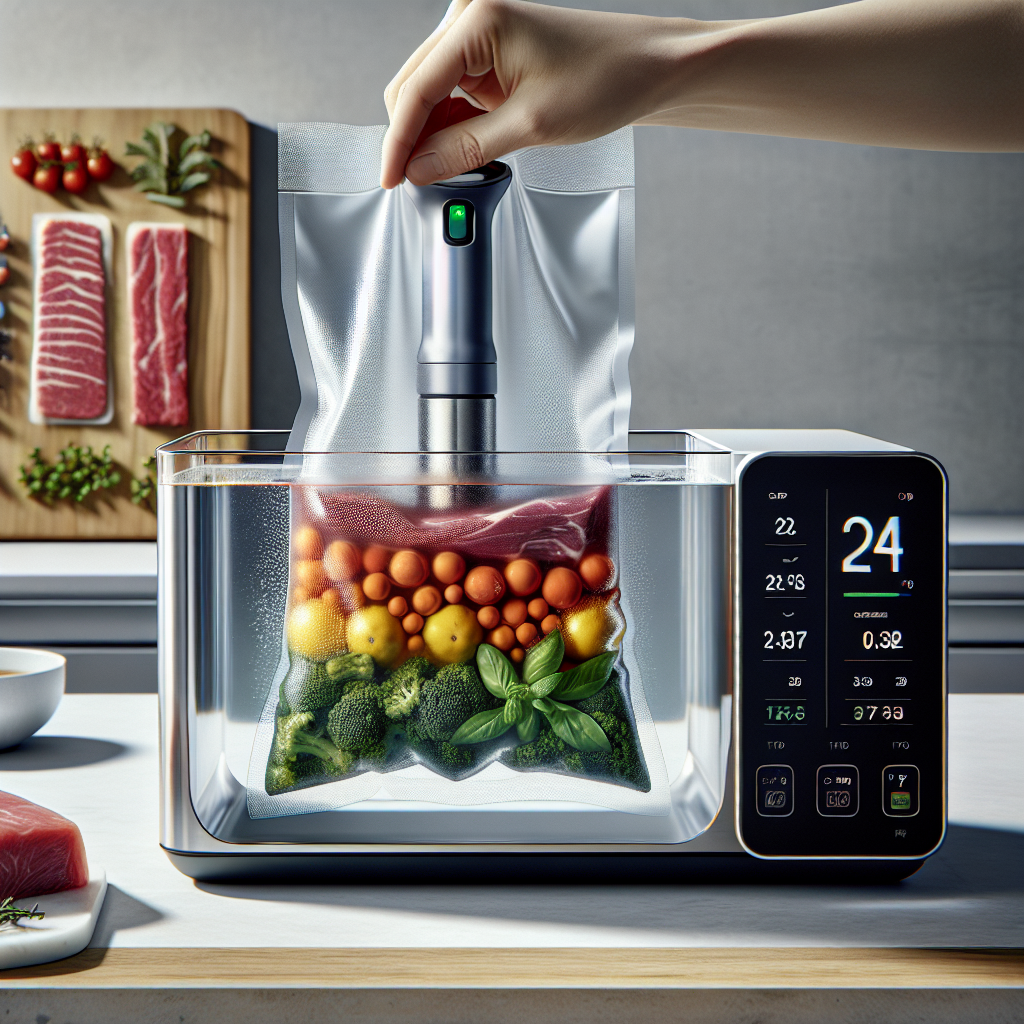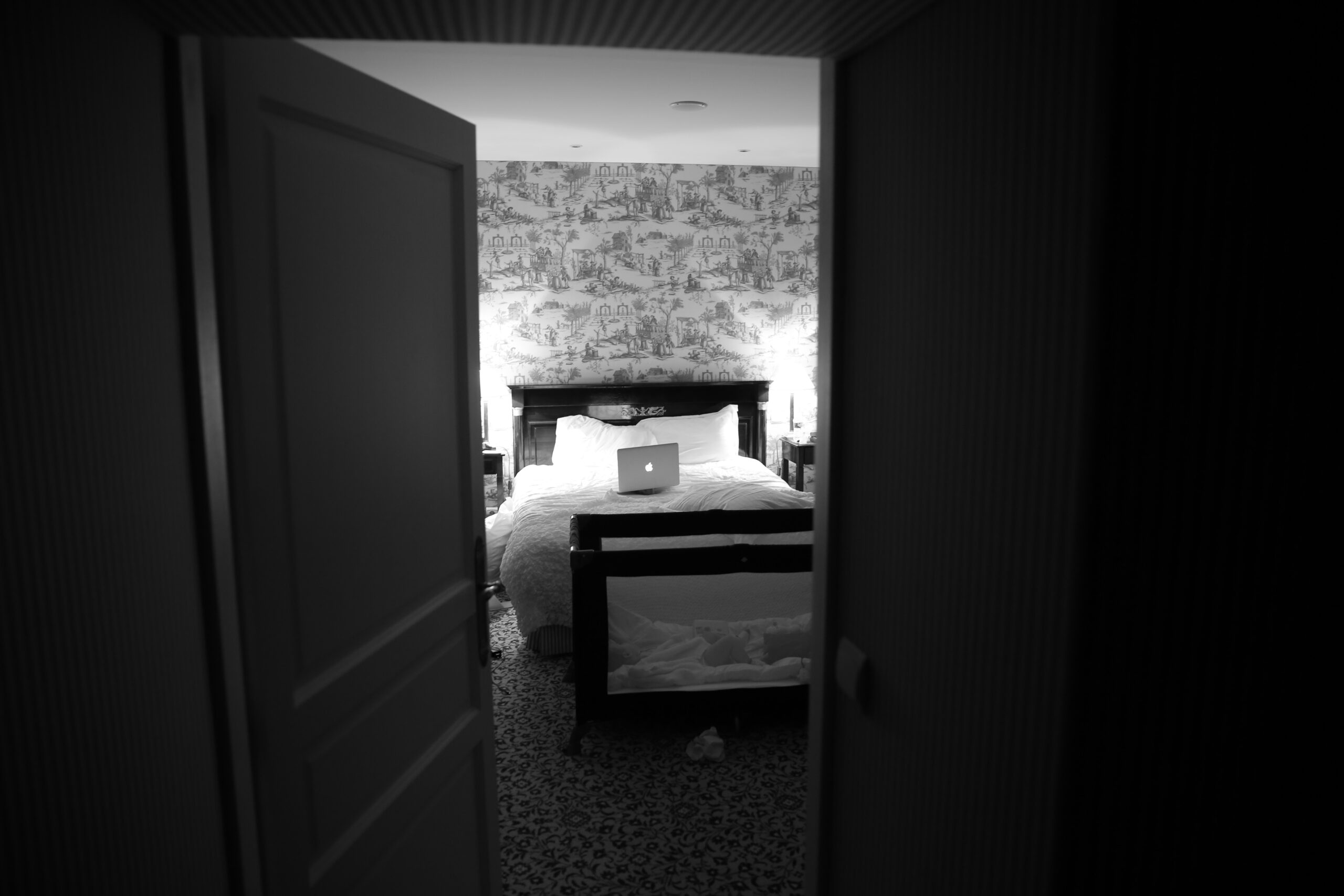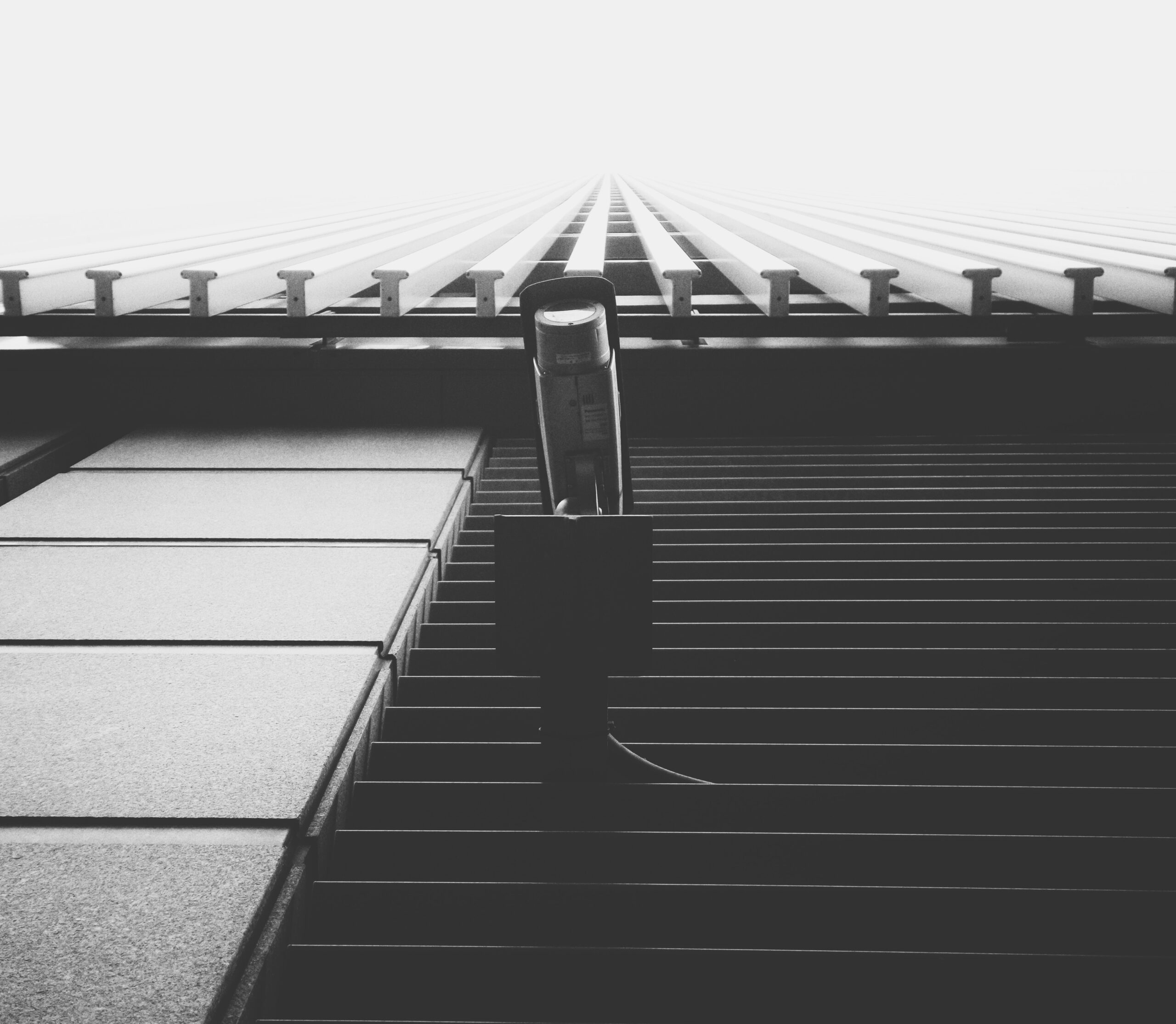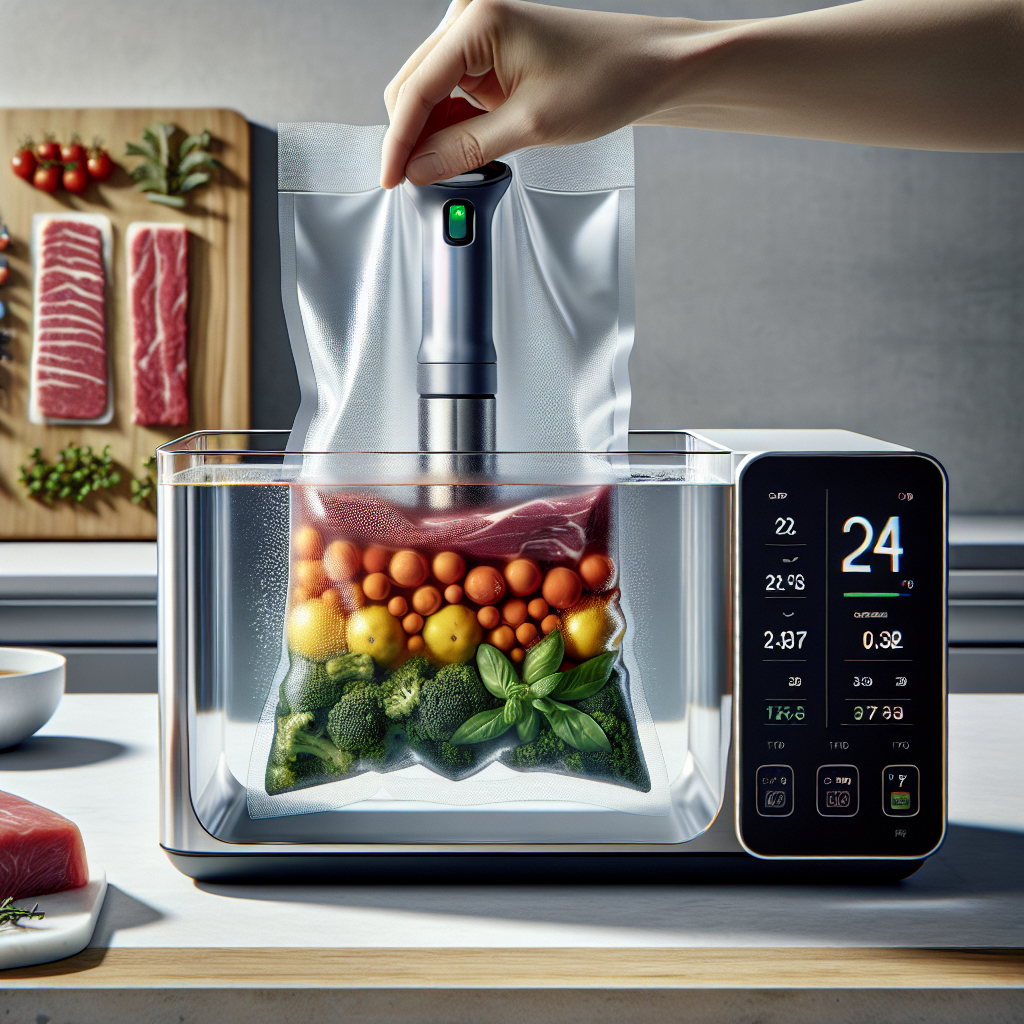
Imagine never having to worry about overcooking your food again. With sous vide cooking, this dream becomes a reality. Sous vide, meaning “under vacuum” in French, is a cooking technique that involves sealing food in a bag and immersing it in a precisely controlled water bath. The result? Perfectly cooked dishes, every single time. But as with any cooking method, there are always questions. Can you actually overcook food with sous vide? In this article, we’ll explore the limits of sous vide cooking and uncover the truth behind this culinary dilemma. Get ready to dive into the world of sous vide and discover the secrets to achieving that ideal doneness in your meals.
Understanding Sous Vide Cooking
Definition of sous vide
Sous vide, which means “under vacuum” in French, is a cooking technique that involves vacuum-sealing food in a bag and cooking it in a precisely controlled water bath. This method allows for precise temperature control and even cooking throughout the food.
How sous vide works
To cook sous vide, you need a water bath and a sous vide machine or immersion circulator. The machine heats and circulates the water to maintain a constant temperature. The food, usually sealed in a plastic bag, is then placed in the water bath. The sous vide machine ensures that the water temperature remains constant, slowly and evenly cooking the food to the desired level of doneness.
Benefits of sous vide cooking
Sous vide cooking offers several benefits that make it popular among home cooks and professional chefs alike. Firstly, the precise temperature control of sous vide allows for consistent and predictable results every time. This is especially beneficial when cooking delicate foods such as fish or eggs, where overcooking can easily occur with traditional cooking methods.
Secondly, sous vide cooking allows for maximum flavor retention. Since the food is cooked in a sealed bag, the flavors and juices are retained, resulting in incredibly flavorful dishes. The slow and gentle cooking process also enhances the natural flavors of the ingredients.
Lastly, sous vide cooking provides convenience and flexibility. By cooking food in a water bath, you can easily multitask in the kitchen. Sous vide also allows you to cook food ahead of time and finish it off when needed, making meal prep and planning more efficient.
Optimal Temperature and Timing in Sous Vide
Ideal temperature range for sous vide
Choosing the right temperature for sous vide cooking is crucial to achieving desired results. The ideal temperature range depends on the type of food being cooked and the desired level of doneness. For example, when cooking a steak, a temperature of 130°F (54°C) will result in a medium-rare steak, while a temperature of 140°F (60°C) will yield a medium steak.
It is important to note that the time required to cook food sous vide can vary significantly depending on the thickness and type of food. However, by using sous vide time and temperature guides, you can determine the appropriate temperature and cooking time for different foods.
Determining cooking time for different foods
The cooking time for sous vide varies depending on the type of food and its thickness. Thicker cuts of meat, such as a roast, will require longer cooking times compared to thinner cuts or vegetables. Generally, sous vide cooking times can range from 30 minutes to several hours, depending on the desired texture and doneness.
To determine the cooking time for a specific food, refer to sous vide time and temperature charts, which provide guidelines based on the thickness of the food. These charts are widely available online and can help ensure that your food is cooked perfectly every time.
Effects of prolonged cooking
While sous vide cooking allows for precise temperature control, it is important to be mindful of the potential effects of prolonged cooking. Overcooking food in a water bath for an extended period of time can lead to undesirable changes in texture, tenderness, color, and flavor.
Protein-rich foods, such as meat and poultry, can become excessively tender and lose their desired texture if cooked for too long. For example, a steak cooked for an extended period may become mushy and less enjoyable to eat. Similarly, vegetables can become overly soft and lose their vibrant color when cooked for an extended time.
It is essential to find the balance between achieving the desired level of doneness and avoiding overcooking when using sous vide cooking methods.

Potential Risks of Overcooking with Sous Vide
Loss of texture and tenderness
One of the potential risks of overcooking with sous vide is the loss of texture and tenderness in the food. While cooking with sous vide offers the advantage of precise temperature control, prolonged cooking can result in overly tender or mushy textures, especially with tender cuts of meat. It is important to monitor cooking times and remove the food from the water bath when it reaches the desired level of doneness.
Changes in color and appearance
Overcooking food with sous vide can also lead to changes in color and appearance. For example, a perfectly cooked medium-rare steak will have a pink center, but if left in the water bath for too long, it may turn grayish-brown throughout. Similarly, vegetables may lose their vibrant colors and become dull and unappetizing.
To avoid these changes in color and appearance, it is essential to follow the recommended cooking times for each specific food and regularly monitor the progress to ensure optimal results.
Flavor dilution or loss
Overcooking food with sous vide can result in flavor dilution or loss. While sous vide cooking allows for maximum flavor retention due to the sealed environment, prolonged cooking can cause flavors to dissipate. This is particularly true for delicate ingredients or foods with more subtle flavors.
To prevent flavor dilution or loss, it is important to adhere to the recommended cooking times and not exceed them. By cooking for the appropriate amount of time, you can ensure that the flavors are preserved and the food retains its delicious tastes.
Factors Influencing Overcooking
Temperature fluctuation
One of the factors that can contribute to overcooking with sous vide is temperature fluctuation. It is essential to use a sous vide machine or immersion circulator that maintains a constant temperature throughout the cooking process. Fluctuations in temperature can lead to inconsistent cooking and may cause the food to overcook.
To avoid this, invest in a high-quality sous vide machine that provides accurate temperature control and regularly calibrate it to ensure precise cooking temperatures.
Misjudgment of cooking time
Misjudging the cooking time is another common factor that can lead to overcooking with sous vide. As mentioned earlier, sous vide cooking times vary depending on the type and thickness of the food. Failing to accurately estimate the required cooking time can result in food becoming overcooked and losing its desired texture and doneness.
To prevent this, refer to reliable sous vide time and temperature guides or recipes that provide specific cooking times for various foods. Additionally, stay vigilant and regularly check the food’s progress to ensure it is cooked to perfection.
Variability in food thickness
The thickness of the food being cooked sous vide can greatly impact the cooking time and the risk of overcooking. Thicker cuts of meat or larger vegetables will take longer to cook than thinner cuts. Failing to account for this variability in food thickness can result in uneven cooking or overcooking.
When planning your sous vide cooking, take into consideration the thickness of the food and adjust the cooking times accordingly. A meat thermometer can also be used to ensure that the internal temperature of the food reaches the desired level of doneness.

Preventing Overcooking with Sous Vide
Using precise temperature control
To prevent overcooking with sous vide, it is crucial to use precise temperature control throughout the cooking process. Invest in a reliable sous vide machine or immersion circulator that maintains a constant temperature. Regularly calibrate the machine to ensure accurate readings.
Having precise temperature control allows you to cook the food to the exact level of doneness without the risk of overcooking. It also ensures consistent results every time you use the sous vide method.
Adapting recipes to sous vide
When using sous vide, it is essential to adapt recipes to account for the specific cooking method. Traditional cooking methods often involve higher temperatures and shorter cooking times. It is important to adjust the temperature and cooking time to the sous vide technique to achieve optimal results and prevent overcooking.
Consult sous vide-specific recipes or guidelines that provide recommended time and temperature combinations for different foods. These resources will assist you in adapting your favorite recipes to sous vide cooking and help prevent the risk of overcooking.
Monitoring and adjusting cooking time
Regularly monitoring and adjusting the cooking time is crucial when using sous vide. Even with precise temperature control, factors such as the thickness of the food and personal preference can affect the desired level of doneness and cooking time.
During the cooking process, periodically check the food to assess its progress. Use a meat thermometer or visual cues to determine the doneness. If the food is nearing the desired level of doneness, it is important to promptly remove it from the water bath to prevent overcooking.
Tips for Achieving Perfectly Cooked Sous Vide Food
Understanding desired texture and doneness
To achieve perfectly cooked sous vide food, it is important to understand your desired texture and doneness. Sous vide cooking allows for precise control over the level of cooking, so knowing the texture you prefer is essential.
For meats, consider the level of tenderness and juiciness you desire. For vegetables, think about the desired crispness or softness. Understanding these preferences will help guide you in determining the appropriate temperature and cooking time to achieve the desired results.
Using sous vide time and temperature guides
Sous vide time and temperature guides are invaluable resources when aiming to achieve perfectly cooked food. These guides provide recommended cooking times and temperatures for different types of food based on their thickness.
Consult these guides to determine the ideal temperature and cooking time for the specific food you are preparing. They will help take the guesswork out of sous vide cooking and ensure that your food is cooked to perfection every time.
Utilizing searing and finishing techniques
While sous vide is excellent for precise and even cooking, it often does not result in the desired crispy exterior or caramelization. To enhance the overall appearance and texture of the food, it is recommended to utilize searing and finishing techniques.
After cooking sous vide, remove the food from the bag and pat it dry. Searing the food in a hot skillet or using a blowtorch will create a beautiful crust and add texture. Additionally, finishing techniques such as glazes or sauces can elevate the flavors of the food and provide the finishing touch to your dish.
Recipes and Recommended Cooking Times
Beef
Beef, a popular choice for sous vide cooking, benefits greatly from the precise temperature control and even cooking. Some recommended cooking times and temperatures for beef cuts include:
- Medium-rare Ribeye Steak: 130°F (54°C) for 2-3 hours
- Medium Filet Mignon: 140°F (60°C) for 1-2 hours
- Well-Done Brisket: 185°F (85°C) for 18-24 hours
These times and temperatures serve as a starting point and can be adjusted according to personal preference and the thickness of the cut.
Poultry
Chicken and turkey can be perfectly cooked using sous vide, resulting in juicy and tender meat. Here are some recommended cooking times and temperatures for poultry:
- Chicken Breast: 145°F (63°C) for 1-2 hours
- Whole Turkey Breast: 150°F (66°C) for 3-4 hours
- Chicken Thighs: 165°F (74°C) for 2-3 hours
Ensure that the poultry reaches the recommended safe internal temperature to avoid any risk of foodborne illness.
Fish and seafood
Fish and seafood are delicate ingredients that can benefit from the gentle cooking method of sous vide. Some recommended cooking times and temperatures for fish and seafood include:
- Salmon Fillets: 125°F (52°C) for 30-45 minutes
- Shrimp: 135°F (57°C) for 30-45 minutes
- Lobster Tails: 140°F (60°C) for 1 hour
These times and temperatures can be adjusted based on personal preference and the specific type of fish or seafood being cooked.
Vegetables
Sous vide cooking can also yield perfectly cooked vegetables with vibrant colors and optimal texture. Some recommended cooking times and temperatures for vegetables include:
- Asparagus: 180°F (82°C) for 15-20 minutes
- Carrots: 183°F (84°C) for 45 minutes
- Broccoli: 185°F (85°C) for 30-45 minutes
These times and temperatures can be adjusted based on the desired crispness or softness of the vegetables.
Desserts
Sous vide is not limited to savory dishes; it can also be used to create delectable desserts. Some recommended cooking times and temperatures for dessert creations include:
- Crème Brûlée: 176°F (80°C) for 1-2 hours
- Cheesecake: 160°F (71°C) for 2-3 hours
- Chocolate Pot de Crème: 167°F (75°C) for 1-2 hours
These times and temperatures can be adjusted based on personal preference and the specific dessert being prepared.
Common Mistakes to Avoid when Sous Vide Cooking
Inaccurate temperature calibration
One common mistake when sous vide cooking is inaccurate temperature calibration. A faulty or uncalibrated sous vide machine can lead to inaccurate temperature readings, resulting in overcooked or undercooked food.
Regularly calibrate your sous vide machine to ensure accurate temperature control. Follow the manufacturer’s instructions or consult reliable calibration guides to ensure precise cooking temperatures.
Failing to properly seal food
Properly sealing the food is essential when using the sous vide method. Failing to seal the bag adequately can result in water leakage and compromised cooking. Water leakage can dilute the flavors and ruin the texture of the food.
Ensure a proper seal by using high-quality vacuum-sealer bags or ziplock bags specifically designed for sous vide cooking. Remove as much air as possible from the bag before sealing to minimize the risk of leaks.
Not accounting for carryover cooking
Carryover cooking refers to the fact that food continues to cook even after it has been removed from the heat source. Failing to account for carryover cooking can result in overcooked food, as the internal temperature of the food can continue to rise when removed from the water bath.
To prevent overcooking due to carryover cooking, remove the food from the water bath slightly before it reaches the desired internal temperature. Allow the food to rest for a few minutes before serving to ensure the residual heat does not lead to overcooking.

Proper Handling and Storage of Sous Vide Food
Chilling food rapidly after cooking
After cooking sous vide, it is important to chill the food rapidly to prevent any bacterial growth. Plunge the cooked food in an ice bath or place it in the refrigerator immediately after cooking. Cooling the food quickly inhibits the growth of bacteria and ensures food safety.
Ensure that the food is properly sealed or stored in an airtight container during the chilling process to prevent contamination.
Safe reheating practices
When reheating sous vide food, it is important to follow safe practices to maintain food quality and minimize the risk of foodborne illness. Properly reheat the cooked food to the desired temperature, ensuring that it reaches a safe internal temperature of at least 165°F (74°C) for poultry and leftovers.
Avoid reheating already cooked sous vide food for extended periods, as this can lead to overcooking and a loss of texture.
Storage guidelines
When it comes to storing sous vide food, it is essential to follow proper guidelines to maintain food safety. Remove the food from the bag after cooking and store it in airtight containers or bags in the refrigerator or freezer.
Label the containers with the date of cooking and consume the food within a safe time frame. Generally, cooked sous vide food can be refrigerated for up to five days or frozen for several months.
Conclusion
Sous vide cooking offers a precise and reliable method for achieving perfectly cooked food. By understanding the ideal temperature range, determining appropriate cooking times, and being aware of the potential risks, you can prevent overcooking and enjoy the numerous benefits of sous vide. With the right techniques, adjustments, and attention to detail, you can create delicious and tender dishes that will impress both your family and guests. So go ahead, embark on your sous vide cooking journey and savor the flavors of perfectly cooked meals.

